Water Croton plants moderately, allowing the soil to dry out slightly between waterings, to promote lush growth.
Our comprehensive guide equips you with vital tips for watering croton plants, essential for their health and aesthetic appeal. Learn the right techniques to foster their vibrant, colorful foliage, transforming your space into a tropical paradise.
This guide is your key to nurturing stunning crotons in your home or garden.
No products found.
Consistent Watering Is Key

Watering your Croton Petra correctly is crucial for maintaining its health. To ensure optimal growth, follow these watering tips:
No products found.
- Keep the soil evenly moist but not waterlogged. Overwatering can lead to root rot and other issues.
- Check the top inch of soil by inserting your finger. Water the plant when it feels dry to the touch.
- Use lukewarm water to avoid shocking the plant’s roots. This helps maintain the plant’s overall health and vitality.
- Ensure the pot has good drainage to prevent water from accumulating at the bottom. Excess water can suffocate the roots and cause damage.
Creating a Tropical Haven
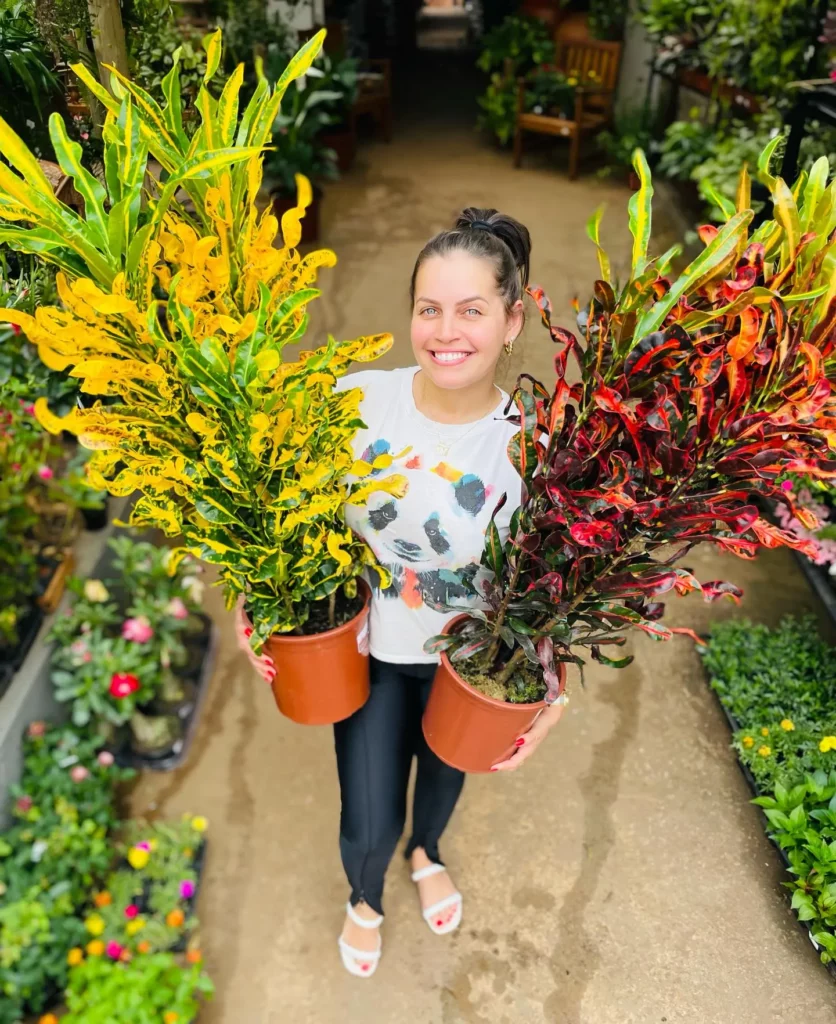
Croton Petras thrive in warm and humid environments, reminiscent of their tropical origins. To ensure the optimal conditions for your Croton Petra’s growth, consider the following:
No products found.
- Temperature: Keep your Croton Petra in an environment with temperatures between 60-80°F (15-27°C). Avoid exposing the plant to drafts or drastic temperature changes, as they can negatively impact its growth.
- Humidity: High humidity levels are essential for the well-being of your Croton Petra. Consider using a humidifier in the room or placing a pebble tray with water beneath the plant pot to increase humidity around the plant.
Anticipating Growth Patterns

Under the right conditions, Croton Petras can exhibit moderate to fast growth, leading to a fascinating transformation in foliage and stature. To promote lush growth and vibrant foliage, it’s important to provide proper care for your Croton Petra.
No products found.
Here are a few essential tips:
- Fertilize monthly: During the spring and summer months, fertilize your Croton Petra with a balanced, water-soluble fertilizer. This helps provide the necessary nutrients for healthy growth and vibrant colors.
- Dust the leaves: Regularly remove dust from the leaves of your Croton Petra. This allows for efficient photosynthesis and helps maintain optimal plant health.
Recognizing the Signs for Repotting

Knowing when to repot your Croton Petra is important for its continued growth and health. There are a few key signs to look out for:
- The plant has become root-bound, meaning the roots have outgrown the current pot. You may notice roots poking out from the drainage holes or circling the inner edges of the container.
- The soil looks exhausted and drains poorly. Over time, the soil can become compacted, preventing proper drainage and potentially causing root rot.
Typically, repotting your Croton Petra every 2-3 years should be sufficient to avoid these issues. When repotting, choose a pot that is slightly larger than the current one to accommodate the plant’s growth.
No products found.
To repot your Croton Petra:
- Gently remove the plant from its current pot, being careful not to damage the roots.
- Place the plant in the new pot and fill it with fresh, well-draining potting soil. Ensure that the soil level is slightly below the rim of the pot.
- Water the plant thoroughly after repotting to aid in its recovery and encourage healthy growth.
Propagating with Confidence
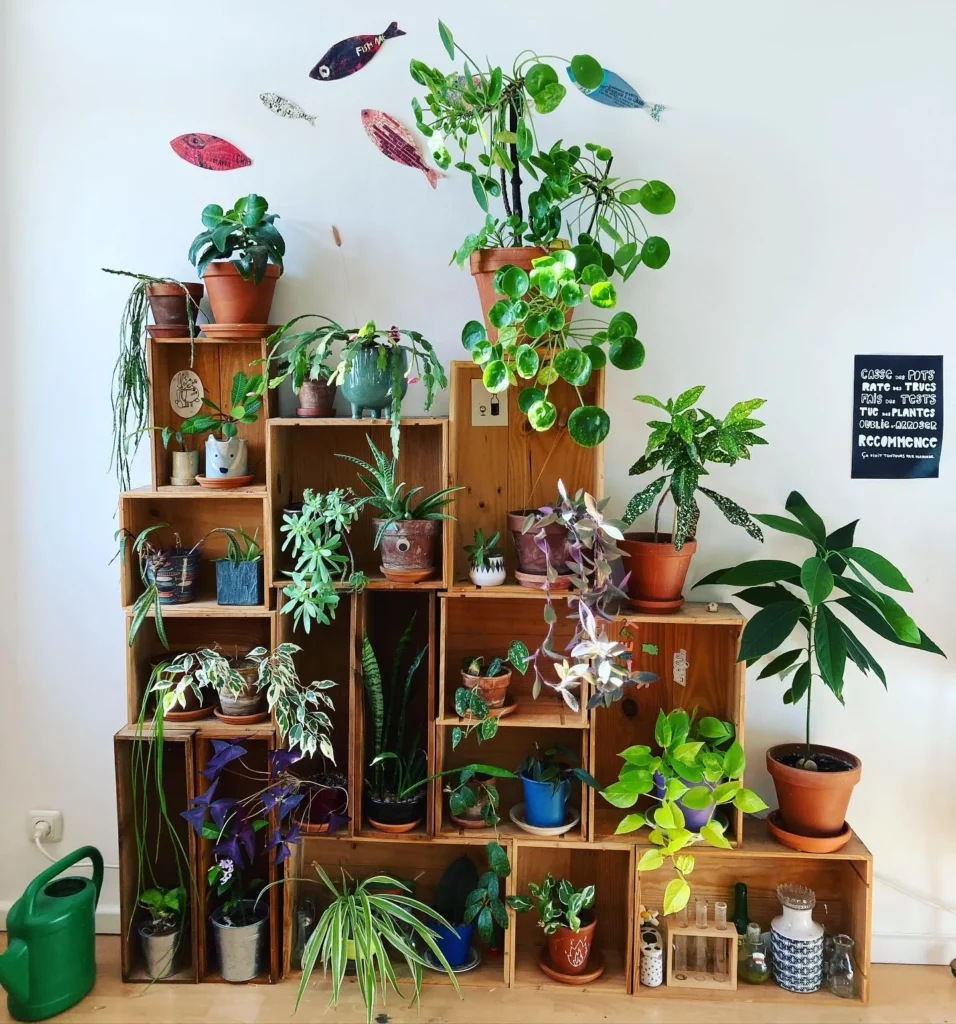
To expand your Croton Petra collection or share this stunning plant with friends, you can easily propagate it through stem cuttings. This method of propagation allows you to create new plants with the same vibrant foliage as the parent plant.
To start the propagation process, gather a sharp, clean cutting tool, such as pruning shears or a knife. Select a healthy stem from the parent plant, preferably one that is a few inches long and has two or three sets of leaves.
Make a clean cut just below a leaf node, ensuring the cutting is free from any diseases or pests.
Once you have the stem cutting, dip the cut end in rooting hormone, which helps stimulate root development. Then, prepare a small pot with moist, well-draining soil.
You can use a mix of peat moss and perlite to ensure the proper moisture retention and aeration for root growth. Place the stem cutting into the pot, burying it about an inch deep in the soil.
To create a greenhouse effect and promote successful root development, cover the pot with a clear plastic bag. The plastic bag will trap humidity and provide a warm and moist environment for the cutting.
Place the pot in a location with indirect light, such as a bright window but out of direct sunlight, and maintain a temperature around 70-75°F (21-24°C).
Throughout the rooting process, which typically takes several weeks, check the moisture level of the soil and mist the cutting as needed to maintain humidity. Be careful not to overwater, as this can lead to rotting.
After a few weeks, you can gently tug on the stem cutting to check for resistance, indicating the development of roots. Once roots have formed, you can remove the plastic bag and gradually acclimate the new plant to its growing environment.
Understanding Potential Risks

When caring for your Croton Petra, it’s important to be aware of potential risks associated with this beautiful plant. One notable risk is the toxicity of Croton Petra to pets if ingested.
The sap of the plant can cause irritation and discomfort, so it is crucial to take preventative measures to ensure the safety of your furry friends.
To keep your pets safe, it is recommended to keep your Croton Petra out of their reach. Place it in a location where curious paws cannot access it easily.
Embracing Croton Petra: Pros and Cons

Adding a Croton Petra to your plant collection can bring a vibrant touch to your space. The colorful foliage of this plant adds a lively and eye-catching element to any room. Not only does it enhance the aesthetic appeal, but it also offers several benefits.
- Air-purifying qualities: Croton Petra is known for its ability to purify the air by removing certain toxins and pollutants. Having this plant in your home can contribute to a cleaner and healthier environment.
- Growth potential: With the right care and conditions, Croton Petra can thrive and exhibit impressive growth. Watching it flourish and develop is a rewarding experience for plant enthusiasts.
While the Croton Petra has many advantages, it’s important to consider some aspects before adding it to your plant collection.
- Specific care requirements: Croton Petra has specific lighting, watering, and humidity needs. It requires bright, indirect sunlight, consistent watering without overdoing it, and a tropical environment with high humidity levels. A regular maintenance routine is essential to keep this plant healthy.
- Sensitivity to changes: Croton Petra can be sensitive to changes in its environment. Sudden variations in temperature or lighting conditions can cause stress and affect its growth. Creating a stable and suitable environment is crucial for its well-being.
- Toxicity to pets: It’s essential to note that Croton Petra is toxic to pets if ingested. Keep this plant out of reach of curious animals to prevent any harm.
Tips for Croton Care
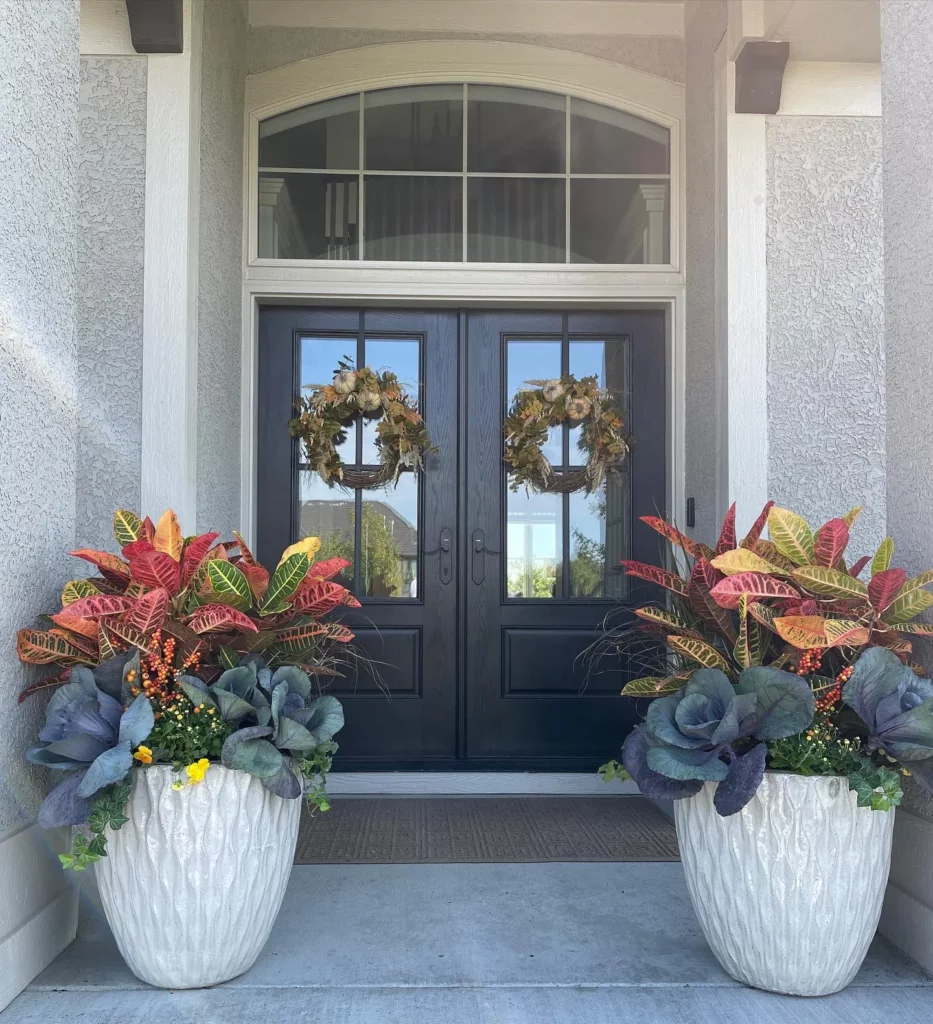
To keep your Croton Petra healthy and thriving, follow these care tips:
- Provide bright, indirect sunlight: Croton plants require plenty of light to maintain their vibrant colors. Place your Croton Petra near a window that receives bright, indirect sunlight to ensure optimal growth.
- Water consistently without overwatering: Keep the soil evenly moist but avoid overwatering, as it can lead to root rot. Check the top inch of soil and water when it feels dry to the touch.
- Create a tropical environment with high humidity: Croton Petras thrive in high humidity levels between 60-80°F (15-27°C). Increase humidity by using a humidifier or placing a pebble tray with water beneath the plant pot.
- Fertilize regularly during the growing season: During spring and summer, fertilize your Croton Petra every month with a balanced, water-soluble fertilizer. This helps provide essential nutrients for healthy growth and vibrant foliage.
- Recognize the signs for repotting when needed: Monitor your Croton Petra for signs of being root-bound or when the soil looks exhausted. Repot in a slightly larger pot using fresh potting soil to accommodate its growth.
- Propagate through stem cuttings: Expand your Croton collection by propagating through stem cuttings. Take a cutting, dip the cut end in rooting hormone, and plant it in moist soil. Cover with a plastic bag to create a greenhouse effect for successful root development.
- Take precautions regarding the plant’s toxicity to pets: Remember that Croton Petra is toxic to pets if ingested. Keep it out of reach or choose pet-friendly plants if you have curious animals in your home.
Troubleshooting Common Issues
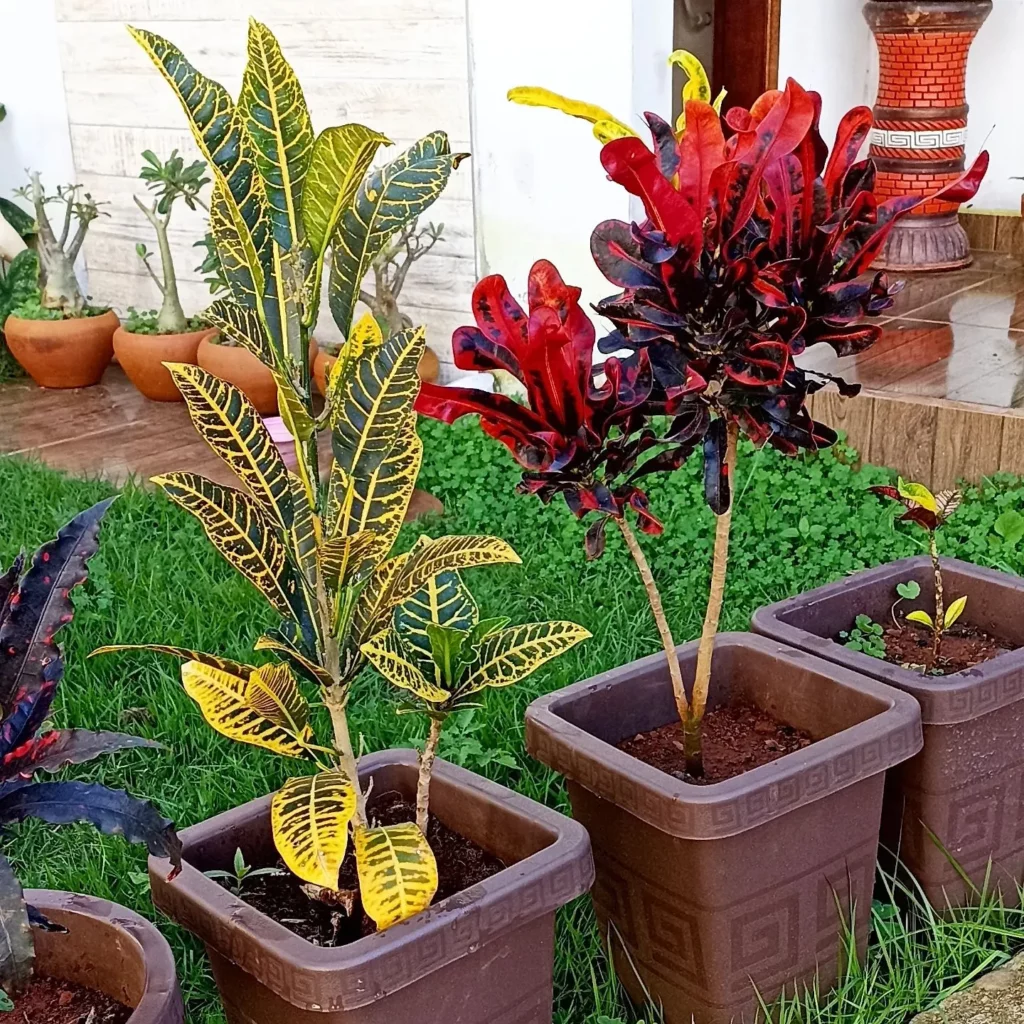
While caring for your Croton Petra, you may encounter some common problems that can affect its health and overall appearance. It’s important to address these issues promptly to ensure your plant thrives.
Here are a few common problems you may face and how to deal with them:
- Leaf wilting due to overwatering: Overwatering can lead to root rot and cause the leaves to wilt. To resolve this issue, adjust your watering practices by allowing the soil to dry out slightly between waterings. Ensure the pot has proper drainage to prevent water from accumulating.
- Leaf burn from direct sunlight: Croton Petras thrive in bright, indirect sunlight, but intense direct sunlight can scorch their leaves. If you notice leaf burn, move your plant to a location with filtered or indirect light to prevent further damage.
- Sensitivity to changes in environment: Croton Petras can be sensitive to changes in temperature, humidity, and light conditions. Maintain stable environments by avoiding drafts, sudden temperature changes, and keep the humidity levels consistent. This will help prevent stress and leaf drop.
Conclusion
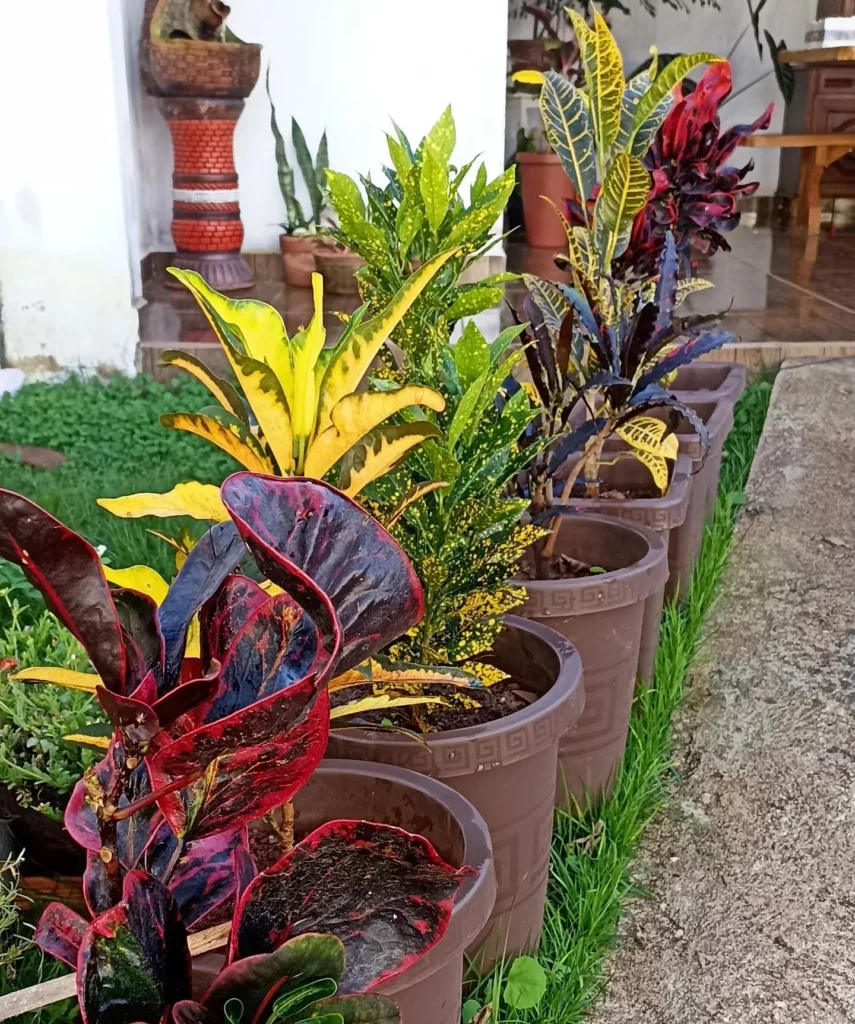
Remember to provide bright, indirect sunlight to maintain its vivid hues and rotate the plant periodically for even light exposure. Consistent watering is crucial, keeping the soil evenly moist but not waterlogged.
Use lukewarm water to avoid shocking the plant, ensure good drainage, and create a tropical environment with high humidity levels.
Additionally, fertilize your Croton Petra regularly during spring and summer to nourish its growth. Repot the plant every 2-3 years when needed and propagate through stem cuttings for multiplying your collection.
Take precautions as Croton Petra is toxic to pets if ingested, so keep it out of their reach.
By implementing these key takeaways for Croton care, you’ll witness a fascinating transformation in foliage and enjoy a vibrant and thriving plant that adds a tropical vibrancy to your space. Happy gardening!
FAQ
What is the importance of bright light for croton plants?
Croton Petra plants require bright, indirect sunlight to maintain their vibrant colors. Adequate light exposure enhances the vivid hues. However, harsh direct sunlight can scorch the leaves, so it’s important to place the plant near a window that gets plenty of sunlight while being cautious of intense rays.
How should I water my Croton Petra?
Consistent watering is crucial for the health of your Croton Petra. The soil should be kept evenly moist but not waterlogged. Check the top inch of soil and water when it feels dry. Use lukewarm water to avoid shocking the plant, and ensure the pot has good drainage to prevent root rot.
What environment is best for a Croton Petra?
Croton Petras thrive in warm and humid conditions reminiscent of their tropical origins. They prefer temperatures between 60-80°F (15-27°C) and high humidity levels. Consider using a humidifier or placing a pebble tray with water beneath the plant pot to increase humidity. Keep the plant away from drafts and drastic temperature changes to maintain its growth.
How can I promote growth in my Croton Petra?
To encourage lush growth in your Croton Petra, fertilize the plant every month during spring and summer with a balanced, water-soluble fertilizer. Additionally, regularly dust the leaves to allow efficient photosynthesis and promote healthy growth.
When should I repot my Croton Petra?
It is recommended to repot your Croton Petra every 2-3 years or when it becomes root-bound. Signs of a root-bound Croton include crowded roots and exhausted-looking soil. Choose a slightly larger pot, gently remove the plant, repot it with fresh potting soil, and water thoroughly to support healthy growth.
How can I propagate my Croton Petra?
Propagating your Croton Petra is a fun way to multiply your collection. Stem cuttings are commonly used for propagation. Use a sharp, clean cutting tool to take a stem cutting, dip the cut end in rooting hormone, and plant it in a pot with moist soil. Cover with a plastic bag to create a greenhouse effect, place it in indirect light, and wait for successful propagation.
Is Croton Petra toxic to pets?
Yes, Croton Petra is toxic to pets if ingested. The sap of the plant can cause irritation and discomfort. It is important to take preventative measures by keeping your Croton Petra out of reach of curious pets. In case of ingestion, contact your veterinarian promptly.
What are the pros and cons of growing Croton Petra?
Growing Croton Petra can be a colorful adventure. It brings vibrant foliage, air-purifying qualities, and growth potential. However, it requires specific lighting, watering, and humidity conditions. It can also be sensitive to changes and is toxic to pets if ingested.
What are some general tips for caring for Croton Petra?
To keep your Croton Petra healthy and thriving, provide bright, indirect sunlight, water consistently without overwatering, create a tropical environment with high humidity levels, fertilize regularly during the growing season, recognize the signs for repotting when needed, propagate through stem cuttings, and take precautions regarding the plant’s toxicity to pets.
What are some common issues that can arise with Croton Petra?
Common issues with Croton Petra include leaf wilting due to overwatering, leaf burn from direct sunlight, and sensitivity to changes in the environment. These problems can be addressed by adjusting watering practices, providing suitable lighting conditions, and maintaining stable temperature and humidity levels.
How do I troubleshoot common issues with Croton Petra?
If you notice leaf wilting, adjust your watering practices to ensure the soil remains evenly moist but not waterlogged. If you observe leaf burn, move the plant to a location with indirect sunlight or provide shade. If your Croton Petra is sensitive to changes, maintain stable temperature and humidity levels. Regularly monitor the plant’s condition and make necessary adjustments to promote healthy growth.





